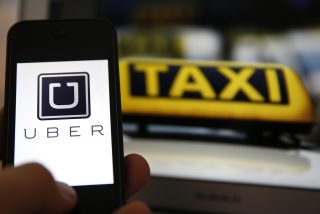As a way to boost the earnings of registered drivers in Kenya, Uber has announced that riders will be charged more for their trips. The decision was triggered by a number of strike actions taken by drivers in recent months.
In a notice to its driver-partners who have been agitating for fare increases to cover increased fuel and vehicle maintenance costs, the company revealed it will increase ChapChap and UberX rates in the latest price review. This will see driver earnings rise significantly and the cost of journeys go up by an average of about 26 percent and 13 percent respectively.
“From Monday, 26 August 2019, Uber will be introducing changes to Uber ChapChap and UberX,” the notice reads. “These changes have been informed by your continued feedback and many months of thorough reviews on the growth and sustainability of your earnings opportunity.”
Riders taking the new premium option, UberX, will pay Sh11 more per kilometre and a shilling extra per minute will be charged. Those taking the ChapChap option are required to pay Sh22, which is Sh4 higher per kilometre.
While their base fare is still at Sh80 and Sh85 respectively, their shortest rides will now cost Sh50 more. This thereby increases it to Sh150 for ChapChap and Sh200 for the UberX option. Also, the Sh4 per minute flat rate fee previously applied is now Sh5 for Uber X users.
In addition, ChapChap riders will be required to pay Sh8 extra per kilometre after the trip exceeds 11 kilometres. This significantly increases the cost of the ride on long trips.
Uber has also scrapped off its premium category, UberSelect and replaced it with UberX which will only enlist cars with a specified engine capacity.
More so, the new Uber model disables the driver’s ability to switch between categories. This blocks the opportunity drivers had to switch to the budget option to gain more trips, especially during low-demand days.
Rival ride-hailing service, Bolt, had made a similar move in July when it removed its budget fares option, Bolt Go and aligned the rates to the recommended AA charges. This decision increased drivers earnings by about 20 percent as riders were only left with the costlier Base option. However, this increase in charges could also spell bad business for digital cabs.
By Tobiloba Ishola.








